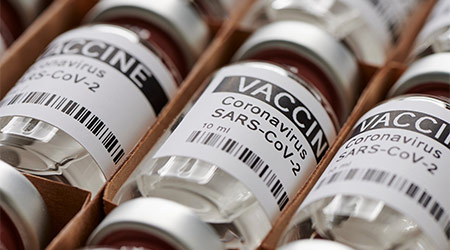It’s here. Thanks to the tireless work of dedicated scientists with Pfizer, Moderna and many others, we now have a vaccine that is about 95 percent effective in protecting us against COVID-19. So far, 18.4 million shots have been given in the United States (about 4.5 percent of the population), the majority administered to frontline workers and vulnerable elderly populations. While we’ll still have “social distancing” in our vernacular for some time, the COVID-19 vaccine is a medical breakthrough and a crucial step in the right direction to end the pandemic.
So… now what?
As healthcare facility teams learned during the H1N1 outbreak of 2009, the virus would be combatted with the urgent rollout of a vaccine. Similarly to H1N1, the biggest challenge would be logistics. Many healthcare facilities, hospitals and pharmacies were left to wonder: How will we receive and distribute the vaccine? How will we reassure the public of its safety and effectiveness? How can we build a proper plan and adhere to it? Answering these questions is no easy task, but with emergency management, the answers are within reach.
Having a well-established emergency management (EM) team lays the foundation for successfully addressing any unexpected crises. Emergency is a multi-disciplinary effort, and an EM team’s strength is in the ability to help a facility through coordinating responses, following procedures and maintaining safety. Over the next few months as we gear up to a nationwide rollout of the vaccine, EM teams will be crucial in establishing and delivering distribution plans — in addition to keeping an eye on the horizon to prepare for the next potential global outbreak.
Emergency management also involves the relationships built at the local, state and national level. Being a trusted partner of the federal government allows for communication about boots-on-the-ground happenings or severe complications that need to be shared quickly with a national body. Those that implement EM in their facility improve their overall environment and will be more prepared to serve their patients and community in the long run.
Additionally, the EM team should designate an additional group of experts to tackle problems within the facility and the vaccination plan. With this team, members can prepare guidance and navigate communication channels as they act as a liaison between the EM team, patients and staff. It’s important to gather top experts in a variety of fields — operations, technology, energy, facilities management and more — to ensure all bases are covered.
Working in a variety of fields means the experts will be able to monitor facilities’ activity and adapt quickly to any situation in real time. This diverse team can collaborate and create solutions for what facilities can do to adjust processes and programs should the need arise during vaccine distribution.
Scott Cormier is the Vice President of Emergency Management, Environment of Care (EOC) and Safety at Medxcel, specializing in facilities management, safety, environment of care, and emergency management and provides healthcare service support products and drives in-house capabilities, saving and efficiencies for healthcare organizations that, in turn, improve the overall healing environment for patients and staff. Cormier leads the development and implementation of emergency management, general safety and accident-prevention programs for a national network of hospitals that Medxcel serves.

 Building Sustainable Healthcare for an Aging Population
Building Sustainable Healthcare for an Aging Population Froedtert ThedaCare Announces Opening of ThedaCare Medical Center-Oshkosh
Froedtert ThedaCare Announces Opening of ThedaCare Medical Center-Oshkosh Touchmark Acquires The Hacienda at Georgetown Senior Living Facility
Touchmark Acquires The Hacienda at Georgetown Senior Living Facility Contaminants Under Foot: A Closer Look at Patient Room Floors
Contaminants Under Foot: A Closer Look at Patient Room Floors Power Outages Largely Driven by Extreme Weather Events
Power Outages Largely Driven by Extreme Weather Events